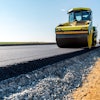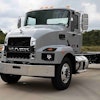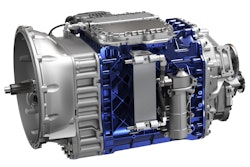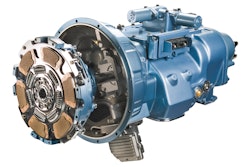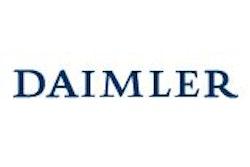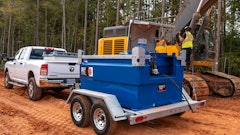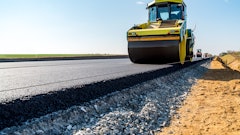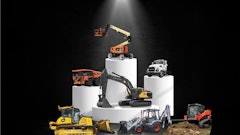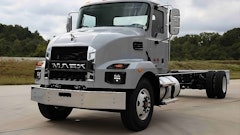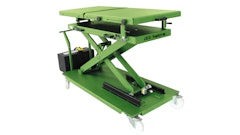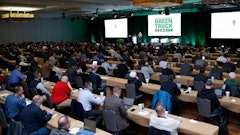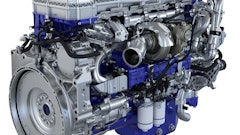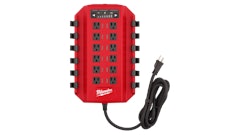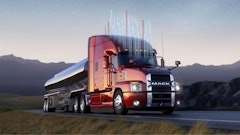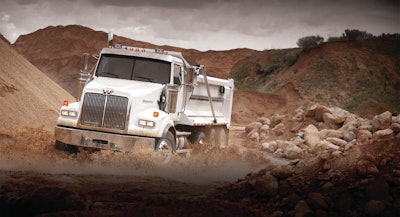
The manual transmission, with its simplicity, reliability and light weight, has historically been the dominant force in the heavy-duty vocational truck market. But it takes a skilled driver to efficiently operate a heavy-duty manual transmission. And with skilled drivers in short supply, reliability and uptime can become the first victims. In addition, advancements in communication between the engine and transmission are skewing the efficiency equation away from the manual transmission.
There has been a trend in the heavy-duty truck markets toward automatic and automated mechanical transmissions (AMTs). There are several factors driving the move, including a lack of qualified drivers, the desire to increase uptime and productivity and the ability to retain drivers by reducing fatigue. With an AMT or automatic transmission, the driver can focus on the task at hand instead of hitting the correct shift points. With no clutch pedal, the driver is less fatigued at the end of the day.
The choice between an AMT and automatic transmission is really dependent on your application. While AMTs and automatic transmissions both automate the shifting process for the driver, they are very distinct products that accomplish this task using very different methods.
AMTs Share Attributes with Manual Transmissions
An AMT, as its name implies, is an automated version of a standard mechanical transmission in which a computer communicates with solenoids to automatically operate the clutch and shifter. Electronic sensors, processors and actuators do the shifting to match travel speed with the load and job application.
There are a handful of AMTs available in the medium- and heavy-duty truck markets, with the leader being Eaton and options also available from Mack, Volvo and Daimler Trucks.
“Eaton has a wide range of vocational AMT products designed to work on soft or paved surfaces,” says James Michaels, Eaton. By directly transmitting power through gears, the AMT is well-suited to fuel-sensitive applications.
“The main strengths of an AMT include driveability, safety and fuel economy,” says Brad Williamson, manager, engine and component marketing for Daimler Trucks North America. “The biggest weakness is perception because previous models had some quality, performance and driver acceptance issues. But the new AMTs address all of these. AMTs are very reliable products and we feel the quality and durability are world class. ”
In off-road environments, it is critical to protect the driveline from shock loads. “The Eaton UltraShift PLUS has the ability to limit torque the output shaft experiences in all gears,” says Michaels. “This is particularly helpful in protecting the driveline in difficult (soft) conditions where a spike in output torque can occur. UltraShift PLUS also controls torque during shifts to ensure a smooth transition and at startup by limiting the throttle to an acceptable rate given the conditions.”
Hills are also a concern in many vocational applications. “The Eaton AMT has a hill hold feature that prevents the truck from rolling before the driver is ready,” says Michaels. “It also provides smooth deceleration when needed during downhill events, providing a safe experience and saving on brake life.”
When it comes to acceleration, the automatic transmission does have an edge. “A torque converter product tends to be faster off the line,” admits Michaels.
But there are many key benefits to an AMT. The automated transmission price point falls in between the manual transmission and the automatic. “At a similar torque rating, the automatic transmission costs thousands more than an Eaton AMT,” says Michaels.
And technicians familiar with manual transmissions should not have a problem working on AMTs. “The Eaton AMT lineup utilizes the same base architecture as our manual products, which provides ease of service,” says Michaels.
“Many AMTs are very capable off-road tools, but most of the non-manual off-road transmissions sold today are automatic,” says Williamson.
Automatics Excel at Stop and Go
When it comes to automatic transmissions, Caterpillar offers the CX31 for its trucks, while Allison dominates the rest of the market for heavy-duty trucks.
In many vocational applications, the trucks start and stop frequently in poor underfoot conditions. This is where an automatic really shines. The automatic transmission provides uninterrupted power to the wheels when accelerating through the gears, and it helps cushion shock loads to the driveline.
“Automatics are advantageous for any application with high vehicle acceleration or extreme stop and go requirements,” says Williamson.
“Fully automatic transmissions utilize technology that smoothly shifts gears instead of a disconnect clutch, thereby delivering uninterrupted power to the wheels during gear shifts and requiring minimum driver input,” says Lou Gilbert, director of North American marketing and global brand development for Allison Transmission. “AMTs are manual transmissions that feature automated operation of the disconnect clutch.” An automatic transmission uses fluid pressure to transmit power through a set of planetary gears to a final drive. Full power shifts provide quick acceleration and eliminate the need for constant shifting.
The key enabler is the use of a torque converter. “A torque converter provides superior startability, acceleration, smooth operation and maneuverability through its ability to multiply engine torque by up to 2.7 times,” says Gilbert. “Manual and AMT products must each (manually or electronically) apply a starting clutch, which will wear out over time and require adjustment and replacement. A torque converter does not require maintenance.”
And a torque converter can provide added protection of the driveline in poor underfoot conditions. “As a fluid coupling device that delivers a cushion effect during the launch of a vehicle, a torque converter reduces stress on all components in the driveline and increases vehicle uptime vs. the disconnected clutch of a manual or AMT transmission,” says Gilbert. “The disconnect clutch often applies power inconsistently and causes lurching, wheel hopping and fatigue to drivelines, rear-end gears and axles. Over time, this inconsistency generally leads to costly driveline failures and towing to a service facility.”
The ability to continually supply power to the wheels without interruption is also an advantage in poor underfoot conditions. This means superior acceleration and a smooth drive, effortless shifting, precise traction control and improved maneuverability, even in harsh or
rugged conditions.
“Full power shifts are far more efficient because power delivery to the wheels is never broken,” says Gilbert. “Manual transmissions and AMTs interrupt power between every shift, causing loss of vehicle momentum. Full power shifts are inherent with all Allison products due to the torque converter and continuous power technology shifting.
“As compared to manual transmissions and AMTs, we believe the superior performance attributes of our fully automatic transmissions in vocations with a high degree of ‘start and stop’ activity, as well as in urban environments, include lower maintenance costs, reduced vehicle downtime, ease of operation, increased safety and improved driver and passenger comfort,” says Gilbert. “Additionally, we believe our transmissions offer increased fuel efficiency and faster acceleration, resulting in lower operating costs and increased productivity for vehicles with that same duty cycle.”
It also helps the driver control the vehicle at low speeds. Compare this performance to a manual or automated manual transmission (AMT), which can have a much slower launch and difficultly maintaining momentum when shifting.
Allison automatic transmissions also give you a choice of operating modes to best suit your driving conditions. “Our transmissions offer load-based shift schedules to automatically enhance fuel savings or add more power when needed. In ‘economy mode,’ the transmission shifts at lower engine speeds to provide fuel savings, and upshifts at higher speeds for greater acceleration when required for the vehicle load and road conditions.”
Maintenance is also simplified with an automatic transmission. Since automatic transmissions don’t have a starting clutch, you won’t have routine clutch damage or need replacements. Routine oil and filter changes are the only regular maintenance required. With Allison’s Prognostics feature, you can quickly monitor oil life, filter life and transmission health to take the guesswork and hassle out of scheduling routine vehicle maintenance. This saves you time and money while providing maximum protection for the transmission.


